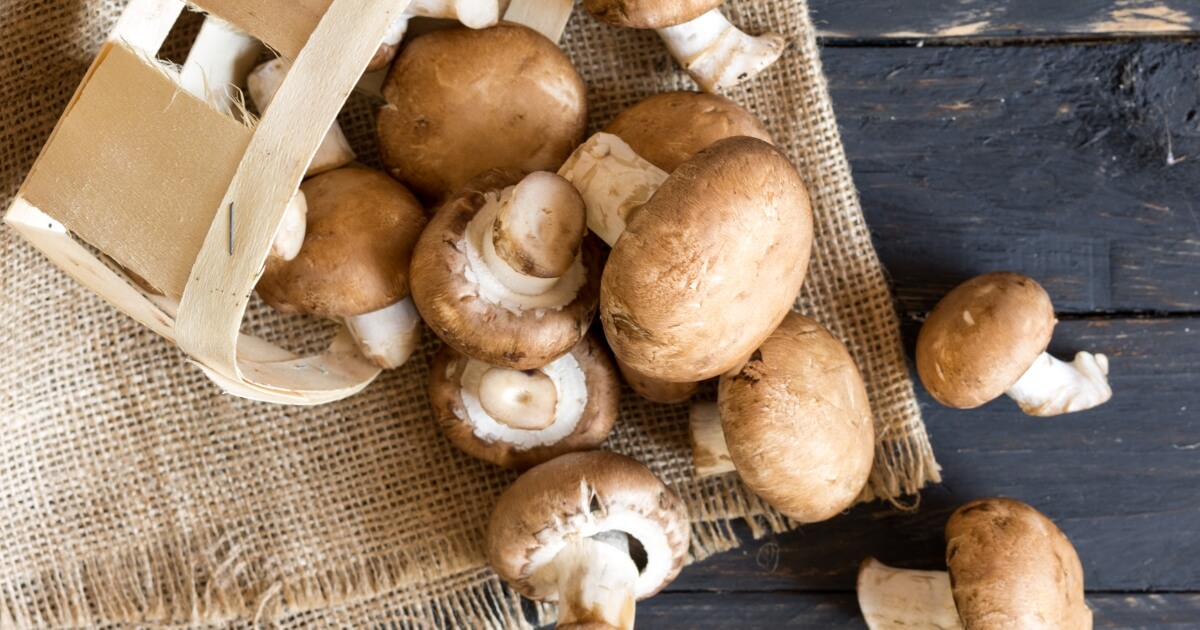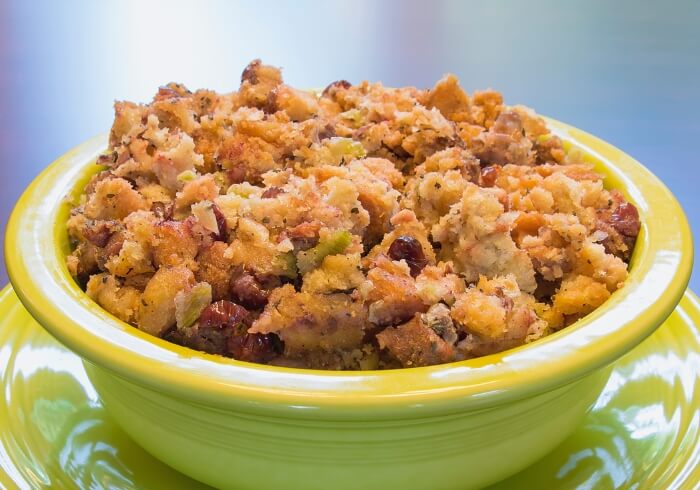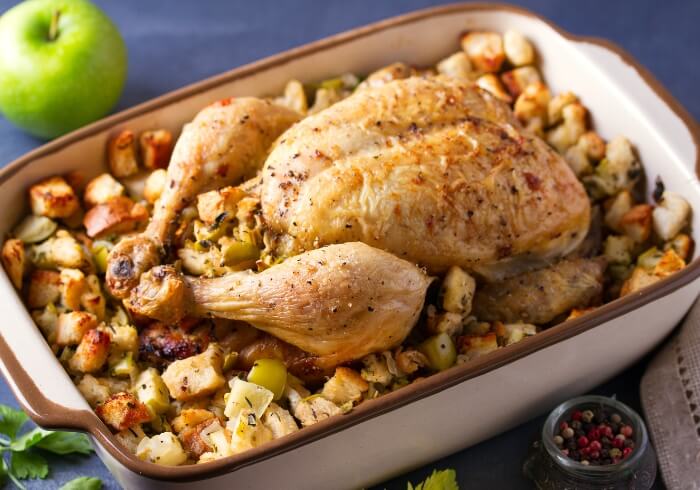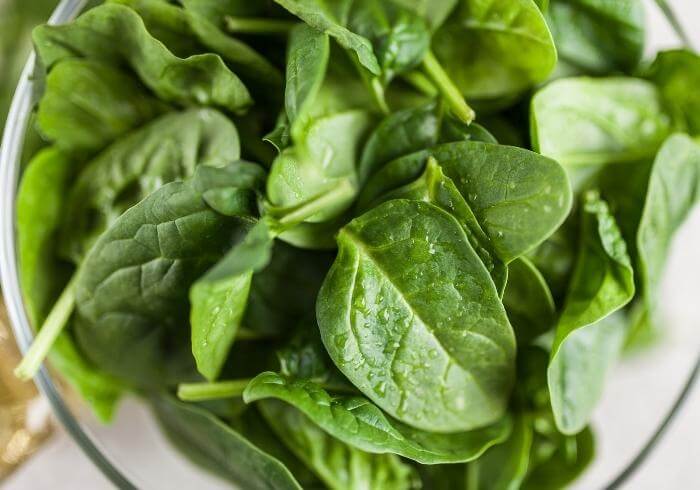Whether you’re looking at the tank at your local grocery store or scrolling through an online store, buying a lobster can be as thrilling as finding that perfect pair of shoes. But unlike footwear, you’re going to eat this purchase, so let’s make sure you get it right.
“Where do I even start?” Well, you’ve got two choices: your local grocery store and online sources. Each has its own pros and cons, and I will walk you through both.
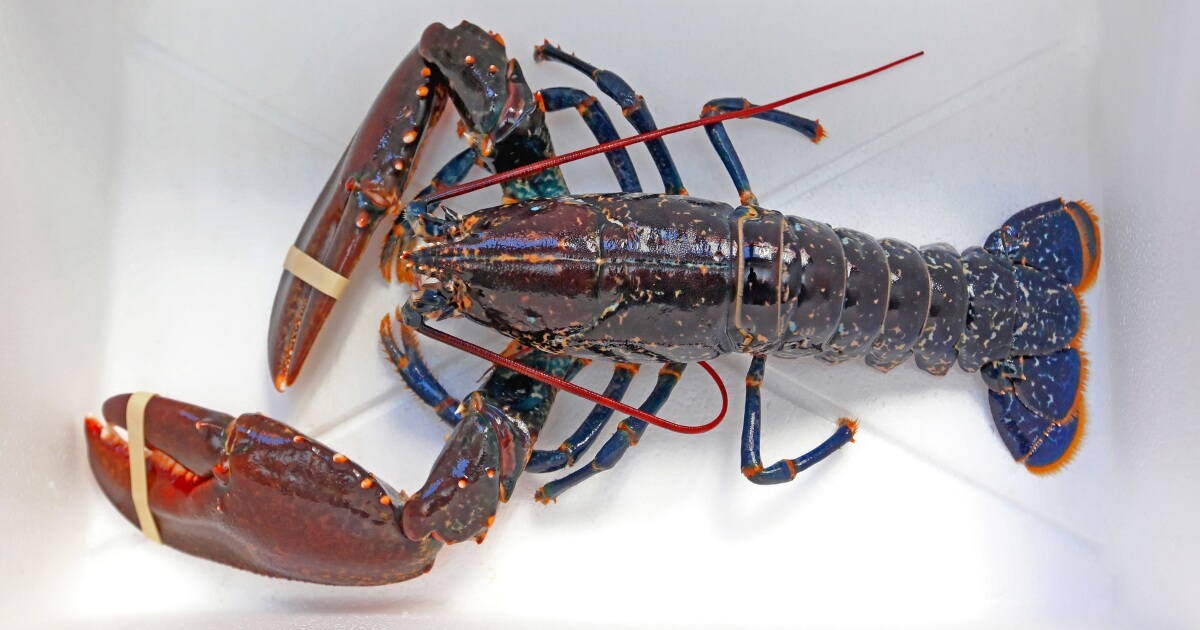
So, whether you’re a lobster newbie or someone looking to up your game, this guide has got you covered. We’re talking steps, tips, and even a few insider secrets. Let’s get cracking!
Why Quality Matters
The biology of a lobster plays a big role in how it tastes and feels in your mouth.
For example, hard-shell lobsters are often the go-to for meaty, firm bites. But if you’re after something more tender, soft-shell lobsters are your ticket.
What is the difference? Lobsters grow by molting, which means they shed their old shells to make room for new ones. During this shell game, the meat inside can change in both texture and flavor. It’s a bit like how a fine wine ages, each stage offering a distinct experience.
Now, let’s talk about something called enzymatic breakdown. After a lobster’s time is up, enzymes in its body start breaking down the meat.
The longer the lobster is out of the water, the more this process can affect the quality of the meat. It’s a bit like how bread goes stale, so the fresher, the better.
Local Grocery Store vs. Online: Pros and Cons
So, you’ve got some lobster biology knowledge, but where’s the best place to snag that perfect crustacean? You’ve got two main options, so let’s break it down.
Local Grocery Store
Pros:
- Immediate availability: See it, buy it, cook it.
- Physical inspection: You can check for signs of a healthy lobster.
- No shipping fees: Just toss it in your cart and go.
Cons:
- Limited selection: You get what’s in the tank.
- Store hours: You’re bound by when they’re open.
- Freshness can vary: It’s a bit of a gamble.
Online
Pros:
- Wide selection: From Maine to spiny, it’s all there.
- Convenience: Shop in your PJs if you like.
- Freshness guarantees: Many companies promise it’ll arrive alive.
Cons:
- Shipping fees: Overnight isn’t cheap.
- Wait time: Your dinner is in the hands of a delivery service.
- DOA risk: Dead On Arrival is a bummer, but usually covered by guarantees.
Whether you’re the type who likes to pick out your food in person or the sort who loves the convenience of online shopping, there’s a lobster out there with your name on it.
Buying Lobster Locally
If you’re leaning toward a local grocery store for your lobster quest, let’s make sure you walk in there like a pro. Here’s your step-by-step guide to making that local lobster purchase a success.
Step 1: Head To The Seafood Section
Once you’ve finished shopping for your other groceries, make a beeline for the seafood section. That’s where you’ll find the lobster tank, usually among the fresh fish and shellfish.
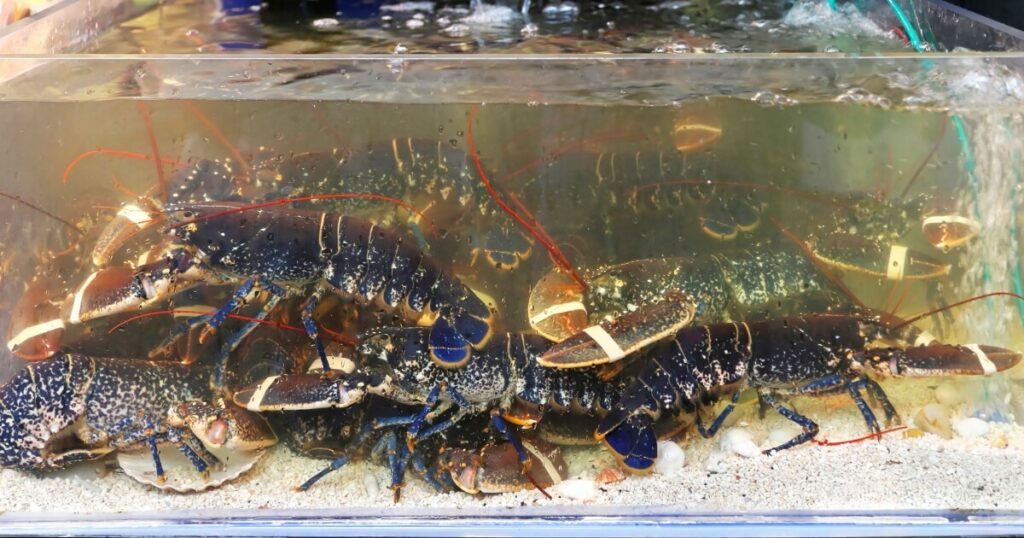
Step 2: Inspect The Tank
You’re at the tank, and it’s time to play detective. Look for lobsters that are active and lively. Their antennae should be moving, and they should be crawling around. Think of it as a lobster dance-off; you want the one with the best moves.
Step 3: Check The Shells
You’ve got your eye on a few lively dancers, but how do you know they’re quality? Give their shells a quick glance. A shell without any cracks or discoloration is a good sign.
As the person staffing the tank reaches in, you’ll also want to check if the shells are hard. So, carefully look if the shells give a little when the clerk pulls one out for you to look at.
Step 4: Chat With The Staff
Don’t be shy to ask them how often they get fresh lobsters and where they source them from. They’ll also be able to give you tips on the best way to bring your lobster home and how to store it before you’re ready to cook it.
Some seafood counters can steam them for you, so keep this in mind if you prefer to buy a freshly fully cooked lobster.
So there you have it, your local lobster-buying guide in a nutshell.
Buying Lobster Online
If the idea of shopping in your PJs while sipping a cup of coffee sounds like your jam, then buying lobster online is right up your alley. But before you click the “Add to Cart” button, let’s go through some steps to ensure you’re getting the best bang for your buck.

Step 1: Research Sources
First off, do your homework. Look for online lobster companies that have solid reviews and a good reputation. Check out their websites, read customer testimonials, and maybe even peek at their social media. You want a company that’s the real deal, not a fishy operation.
Step 2: Understand Shipping
Once you’ve found a trustworthy source, it’s time to dig into the shipping details. Most reputable companies offer overnight shipping to ensure freshness. But keep an eye out for those shipping fees—they can add up quicker than you can say “lobster bisque.”
Step 3: Check Freshness Guarantees
Before you hit that checkout button, look for any freshness guarantees or return policies. Many companies promise your lobster will arrive alive or your money back. It’s like an insurance policy for your dinner, and it’s definitely worth having.
Step 4: Prepare For Arrival
Alright, you’ve made the purchase, now what? Make sure you’re home to receive the package and inspect it right away.
If you’ve opted for a live lobster, it should be moving. If it’s frozen, it should be rock solid. Either way, give it a quick once-over to ensure it meets your standards.
Size And Type: Making The Right Choice
Now that you’re well-versed in where to buy a lobster, let’s talk about what to buy. Lobsters come in all shapes and sizes, and the type you choose can make or break your lobster eating experience.
To get started, let’s break it down with a comparison table:
| Type of Lobster | Size | Age | Shell Hardness | Best For |
|---|---|---|---|---|
| Maine Lobster | 1-2 pounds | Younger | Hard | Lobster rolls, steamed lobster |
| Canadian Lobster | 1.5-3 pounds | Older | Hard | Lobster bisque, lobster thermidor |
| Spiny Lobster | 1-3 pounds | Varies | Soft | Grilled lobster, lobster pasta |
| Warm-Water Lobster | 1-2 pounds | Varies | Soft | Lobster curry, lobster stir-fry |
Size Matters
When it comes to lobsters, size isn’t just about impressing your dinner guests. The size of the lobster can actually affect the texture and flavor of the meat. For instance, a 1-pound lobster is generally more tender, while jumbo lobsters offer a meatier bite.
Age Isn’t Just A Number
Believe it or not, the age of a lobster can impact its taste. Older lobsters tend to have a more robust flavor, thanks to their longer life in the sea. But be cautious because older also means tougher meat.
Type Of Lobster
The varieties of lobster are where it gets fun. You’ve got your Maine lobster, known for its sweet, succulent meat. Then there’s the spiny lobster, which lacks claws but makes up for it in tail meat. And let’s not forget the Canadian lobster, a cold-water cousin to the Maine variety.
Each offers a unique taste and texture, like different blends of coffee.
How Much Lobster Per Person?
Before you pick your lobster, how much do you actually need?
For a laid-back meal, think about one-and-a-quarter-pound lobsters. This size usually yields enough meat for a single serving, especially if you’re pairing it with sides like corn on the cob or a fresh salad. It’s like ordering a small pizza with a couple of toppings—just enough to satisfy.
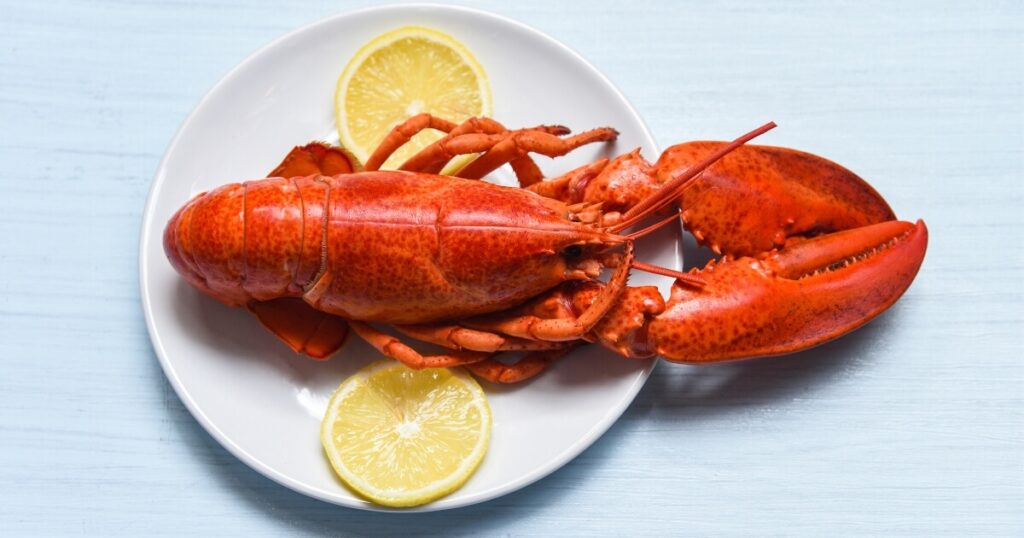
Consider going for something larger if you’re pulling out all the stops for a special occasion. A one-and-a-half to two-pound lobster makes for a more substantial meal.
If lobster is just one of many stars on your seafood platter, you can scale down a bit. A one-pound lobster or even just lobster tails can complement other dishes like clams, mussels, or shrimp. It’s like adding a scoop of guacamole to a fully loaded nacho platter—a little goes a long way.
Planning a lobster-centric feast? In that case, aim for at least one-and-a-half pounds per person. This ensures that everyone gets their fill of this delicious crustacean. It’s like hosting a barbecue and making sure there are more than enough ribs to go around.
Storing Your Lobster Until Cooking Time
You’ve got your lobsters, and you’ve nailed the portion sizes. But what if you’re not cooking them right away?
Proper storage is key to maintaining that ocean-fresh quality. Let’s get into the best ways to store your lobster, whether it’s still kicking or frozen solid.
If you’ve got live lobsters, you’ll want to keep them that way until cooking time. Place them in the fridge, ideally in a cardboard box with damp newspaper or seaweed. This mimics their natural environment and keeps them comfortable. Think of it as a lobster Airbnb, short-term but cozy.
Whatever you do, don’t store live lobsters on ice or in freshwater. This can kill them, and dead lobster is a no-go for cooking.
Got frozen lobster tails or meat? Keep them in the freezer until you’re ready to cook. If you need to thaw them, do it in the fridge for several hours or overnight.
Quick Tip: avoid thawing at room temperature or in warm water, because it can lead to enzymatic breakdown and spoil the texture of the meat.
If you’ve got leftover cooked lobster, lucky you! Store it in an airtight container in the fridge for up to two days. You can also flash freeze cooked lobster meat but consume it within a month for the best quality.
Quick Tips At A Glance
You’re almost a lobster-buying and storing pro, but let’s review some quick tips and notes.
- Check for Movement: Always ensure live lobsters are moving when you buy them. A lively lobster is a healthy lobster.
- Smell Test: Fresh lobster should smell like the sea, not fishy. If it smells off, it probably is.
- Look for the Seal: Make sure the packaging is sealed tightly when buying frozen lobster. Any air in the bag is a deal-breaker.
- Use or Freeze: If you’re not cooking live lobsters within a day of purchase, it’s best to flash freeze them. Just remember to follow proper freezing guidelines.
- Thaw Safely: Always thaw frozen lobster in the fridge, not at room temperature. Safety first!
- Cooking Time: A general rule is to boil or steam live lobsters for about 7–8 minutes per pound. But remember, cooking times can vary based on the cooking method and lobster size.
- Don’t Overcook: Lobster meat becomes rubbery when overcooked. So, keep an eye on the clock.
- Save the Broth: Don’t toss that cooking liquid if you’re boiling or steaming. It’s liquid gold for soups and sauces.
- Lobster Tools: Invest in some good lobster crackers and picks. They make enjoying your lobster so much easier.
Frequently Asked Questions
Why Is Lobster Expensive?
Lobster is often pricier due to the costs of catching, storing, and transporting it. Plus, it’s considered a luxury food item these days.
Is It Better to Buy Whole Lobster?
Buying a whole lobster gives you more meat options, like the claws and legs. It also offers a fresher taste.
Is Frozen Lobster as Good as Fresh?
Frozen lobster can be a solid choice if it’s flash-frozen right after being caught. However, fresh lobster usually has a superior texture and flavor.
What Is the Average Size of a Lobster?
The average size for a Maine lobster is about 1.25 to 1.5 pounds. However, they can grow much larger. Just remember, bigger isn’t always better when it comes to flavor and texture.


